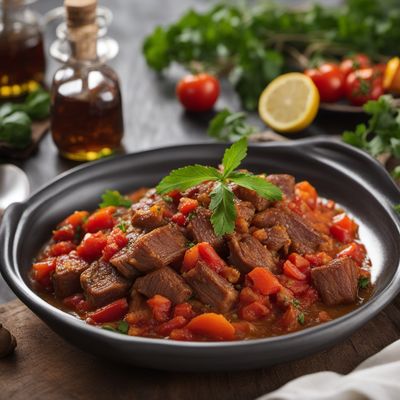
Cuisine
Castilian-Leonese cuisine
Castilian-Leonese cuisine is characterized by its simplicity and use of local ingredients. Meat dishes like cochinillo asado (roast suckling pig) and lechazo (roast lamb) are popular, as are stews like cocido maragato (a stew made with chickpeas, meat, and vegetables). The region is also known for its beans, which are used in dishes like fabada asturiana (a bean stew with pork and chorizo). Peppers, garlic, and onions are also common ingredients.
Typical ingredients
Meat (pork, lamb, beef), Beans, Peppers, Garlic, Onions, Chorizo, Morcilla (blood sausage), Eggs, Potatoes
Presentation and garnishing
Castilian-Leonese cuisine is often presented in a rustic, simple manner, with dishes served family-style. Garnishes are typically minimal, with the focus on the quality of the ingredients.
The region is also known for its wine, which is often served with meals.
More cuisines from this region...
Catalan cuisine, Basque cuisine, Valencian cuisine, Andalusian cuisine, Madrid cuisine, Extremaduran cuisine, Galician cuisine, Castilian-Manchego cuisine, Cantabrian cuisine, Canarian cuisine
History
Castilian-Leonese cuisine has a long history dating back to the Middle Ages. The region's location in the center of Spain made it an important hub for trade and commerce, which brought new ingredients and cooking techniques to the area. The cuisine has also been influenced by the region's Roman and Moorish past.
Cultural significance
Castilian-Leonese cuisine is an important part of the region's cultural identity. Many of the dishes have been passed down through generations and are still enjoyed today. The cuisine is also closely tied to the region's geography and climate, with ingredients and cooking techniques reflecting the area's unique characteristics.
Health benefits and considerations
Meat dishes are high in protein, but may be high in saturated fat and cholesterol. Bean dishes are high in fiber and protein.
Castilian-Leonese cuisine recipes Browse all »

Castilian-Leonese Sfouf
Golden Almond Cake: A Delightful Twist on a Traditional Castilian-Leonese Dessert

Jamoncillo de Castilla
Delicious Almond Candy from Castilla

Castilian-Leonese Style Spicy Lamb Stew
Sabor de León: Spicy Lamb Stew with a Spanish Twist

Castilian-Leonese Napoleonbakelse
Layers of Delight: Castilian-Leonese Napoleonbakelse

Castilian-Leonese Chopped Cheese
Sabor de Castilla: A Twist on the Classic Chopped Cheese

Morzello a la Castellana
Savory Castilian Morzello: A Traditional Delight from Castile and León

Castilian-Leonese Beef Noodle Bowl
Savory Beef Noodle Bowl with a Spanish Twist

Castilian-Leonese Style Stuffed Rice Cakes
Savory Rice Delight: Castilian-Leonese Stuffed Rice Cakes

Castilian-Leonese S'more
Delicioso Chocolate and Honey Sandwich

Castilian-Leonese Style Udon Soup
Savory Udon Delight: A Taste of Castilian-Leonese Cuisine

Castilian-Leonese Style Habshi Halwa
Rich and Spiced Almond Halwa: A Taste of Castilian-Leonese Delight

Castilian-Leonese-Style Eggplants
Savory Eggplant Delight: A Taste of Castilian-Leonese Cuisine